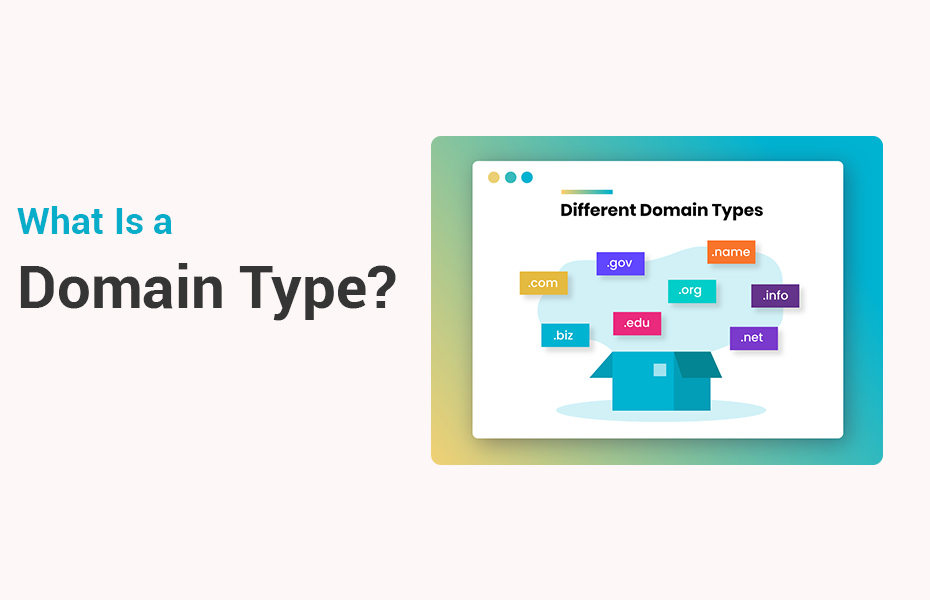What Is a Domain Type?
In this article we will discuss a domain type, a domain name is the address that web users type into their browsers to find your website. A domain name is a tool that helps build brand awareness, promote your products, and increase sales. This article covers domain names, five types of domains, and tips for choosing the best domain name for you.
What is a domain name?
A domain name, often simply called a domain, is the address of a website, basically with the scheme [removed] usually https:// or https://) and the beginning of the URL. It’s what goes between the slashes in the . You can find the main page of a particular website by typing the domain name into the address bar of your internet browser. A domain name usually consists of three parts, with each part of the domain separated by a period.
1.Subdomain or third-level domain, such as www
2.Second-Level Domain (SLD), which is the name of the website
3.Top-Level Domain (TLD), such as com
The Five Types of Domains
Domain names have three main components: top-level domains, second-level domains and third-level domains. When choosing different domain types, make sure each part describes your business, fits your industry, and reinforces your brand. Here are the different parts of a domain name and common options to choose from.
Top Level Domains (TLDs)
TLDs, also called extensions or domain endings, refer to the suffix and the last part of a domain. The web address to the right of the last dot after the primary domain name. For example, if your domain is www.indeed.com, your TDL is “.com”. TLDs that do not represent a country or territory are called generic TLDs or gTLDs.
The Internet Assigned Numbers Authority (IANA), now a division of ICANN (Internet Corporation for Assigned Names and Numbers), manages the assignment of TLDs. By 1988, IANA had published seven of his TLDs that acted as major generic top-level domains (gTLDs).
.com: commercial enterprise (most common TLD)
.org: organization, usually nonprofit
.gov: government agency
.edu: educational institution
.net: network technology organization
.mil: military organization
. int : intergovernmental organization
Obtaining a domain name in a particular generic TLD may require you to meet certain requirements. For example, .edu domains can only be used by accredited educational institutions, and only his government website can use .gov, while almost anyone can get a .com or .net domain.
Country Code TLD (ccTLD)
A Country Code TLD is a two-letter domain extension that designates a particular country, autonomous region, sovereign state, or geographic location. When ccTLDs were first created in 1985, they were intended for registration and use by residents of that country, but some countries now allow outside parties to register domain names using country codes. I also allow Here are some examples of
ccTLDs and their corresponding geographic locations.
.us: United States
.fr: France
.eu: European Union
.au: Australia
.ca: Canada
.ie: Ireland
.uk: United Kingdom
.ms: Montserrat
.sg: Singapore
.hn : Honduras
.za: South Africa
.pl Poland
New gTLD
New gTLDs are generic domain extensions first approved and delegated to applicants by ICANN in October 2013 in response to individual or corporate requests. According to ICANN, over 1,300 new gTLDs could become available over the next few years. For example:
.co
.app
.cool
.bank
.cloud
.earth
.health
.club
Some companies may even have a custom TLD with their brand name . Using your own TLD can help your business stand out from the rest, but choosing a generic TLD ensures that your domain is recognizable to most users.
Second Level Domain
A second level domain is the main part of a domain name, also called a domain title. An SLD is usually a combination of words that describe a company or website. In the example above from his website www.indeed.com, the word “indeed” would be his SLD. You can use any combination of numbers, letters, and hyphens when choosing a second-level domain.
Third Level Domains or Subdomains
A third level domain, also called a subdomain, is the part of the URL that precedes the second level domain. Specifies the type of server that the domain connects to when accessing website data. The most common third-level domain is www., which stands for World Wide Web. Third-level domains were previously a domain name requirement, but are now optional.
Domain owners may want to create subdomains to represent sections of their website. Here are some examples of subdomains of domain names.
shop.website.com: with Shop. or store. As a subdomain, it can redirect visitors to the e-commerce section of her website, i.e. online shop. This allows customers to quickly and easily browse and purchase your company’s products and services.
blog.website.com: Many businesses have a blog section on their website to get online traffic and promote their products. Use blogs. As a subdomain, businesses can effectively promote their digital content.
support.website.com: Add support. A subdomain if your website offers customer support services, resources, or tutorials. This helps streamline customer inquiries and issues.
app.website.com: If you want to host an application on your website or allow users to access her website over the internet, an app can be an advantage. sub domain. This indicates that the user is accessing the online version of the app.






